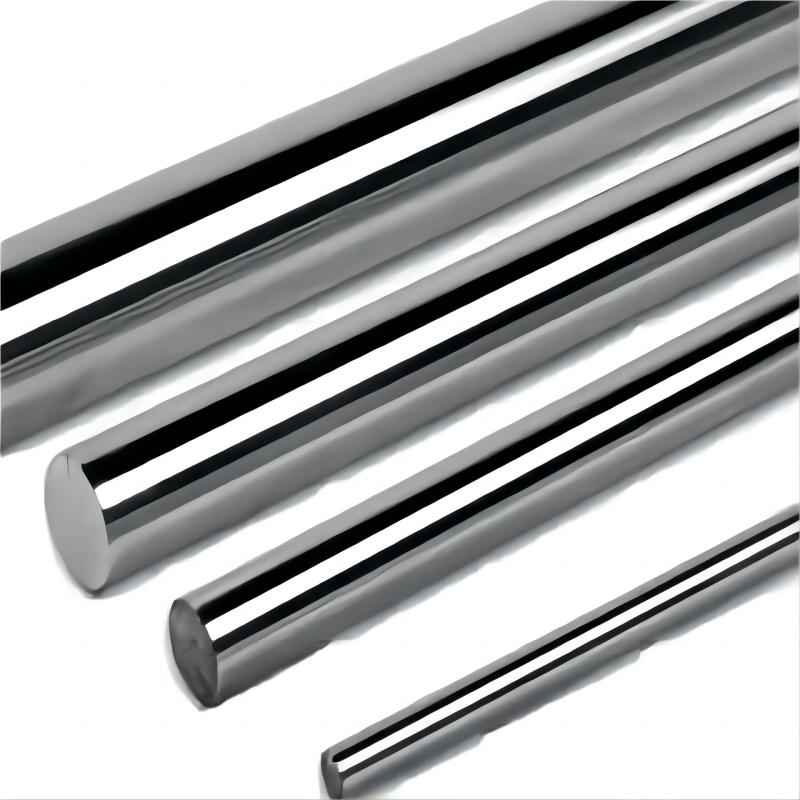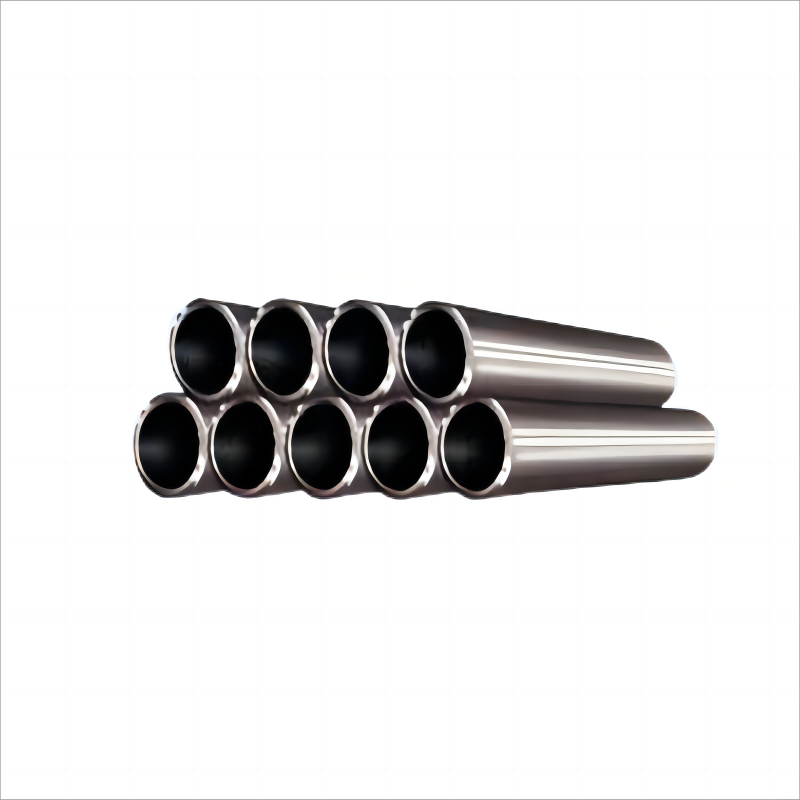
Discover the Secret Materials Used in High-Performance Piston Rods
2024-07-16 07:50:00
Introduction
In the world of high-performance engineering, the materials used to manufacture piston rods are pivotal. These materials must endure extreme conditions, including high temperatures, pressures, and cyclic stresses. For engineers, manufacturers, and purchasing managers in the automotive, aerospace, and machinery industries, understanding the materials behind high-performance piston rods is crucial. This article explores the advanced materials that make these components robust, reliable, and efficient.
Importance of Material Selection in Piston Rods
Performance and Durability
Material selection significantly influences the performance and durability of piston rods. The right material can enhance the strength, fatigue resistance, and thermal stability of the rod. These attributes are essential for maintaining the integrity of the piston rod under harsh operational conditions, thus ensuring the engine or machinery performs optimally.
Impact on Efficiency
The efficiency of an engine or mechanical system is also affected by the material of its piston rods. Lightweight materials can reduce the overall mass of moving parts, leading to better fuel efficiency and faster response times. Furthermore, materials with superior wear resistance can extend the lifespan of piston rods, reducing maintenance costs and downtime.
Traditional Materials Used in Piston Rods
Steel
Steel has been the go-to material for piston rods for decades due to its high strength and durability. Different types of steel, such as carbon steel and alloy steel, are used depending on the specific requirements. Alloy steels, particularly chromium-molybdenum steel, offer enhanced properties like increased fatigue resistance and better thermal stability.
Benefits:
- High tensile strength
- Excellent fatigue resistance
- Good thermal conductivity
Limitations:
- Heavier compared to other materials
- Can be prone to corrosion without proper treatment
Aluminum
Aluminum is another traditional material used in piston rods, especially in applications where reducing weight is crucial. Aluminum rods are common in performance and racing engines where every ounce counts.
Benefits:
- Lightweight, reducing the overall mass of the engine components
- Good thermal conductivity
- Resistant to corrosion
Limitations:
- Lower strength compared to steel
- Can suffer from fatigue over time under high-stress conditions
Advanced Materials in High-Performance Piston Rods
Titanium
Titanium and its alloys are prized in high-performance applications for their excellent strength-to-weight ratio. They are used extensively in racing engines and high-performance sports cars.
Properties:
- High strength
- Low density
- Excellent corrosion resistance
Applications:
- Used in racing cars and high-performance vehicles where weight reduction and strength are critical.
Personal Anecdote: I once worked on a project for a Formula 1 team where we replaced traditional steel rods with titanium. The change resulted in a noticeable improvement in acceleration and overall performance due to the significant weight reduction.
Composites
Composite materials, particularly carbon fiber composites, are becoming increasingly popular in high-performance piston rods. These materials combine high strength with low weight, making them ideal for demanding applications.
Benefits:
- Exceptional strength-to-weight ratio
- High fatigue resistance
- Can be tailored for specific performance requirements
Challenges:
- Higher cost compared to traditional materials
- More complex manufacturing processes
Ceramics
Ceramic materials, while less common, offer unique advantages for piston rods. They are incredibly hard and wear-resistant, making them suitable for extreme conditions.
Advantages:
- High hardness
- Excellent wear resistance
- High thermal stability
Disadvantages:
- Brittleness, which can lead to catastrophic failure under impact
- Expensive and challenging to machine
Innovative Material Technologies
Metal Matrix Composites (MMCs)
Metal Matrix Composites (MMCs) combine metal with a secondary phase (such as ceramic particles) to enhance properties. MMCs are used in high-performance piston rods to improve strength and wear resistance without significantly increasing weight.
Benefits:
- Improved wear resistance
- Higher strength compared to base metals alone
- Enhanced thermal conductivity
Applications:
- High-performance and racing engines
- Aerospace applications
Superalloys
Superalloys, typically based on nickel, cobalt, or iron, are designed to withstand extreme temperatures and stresses. These materials are used in piston rods for applications that require exceptional durability and performance.
Properties:
- Excellent high-temperature strength
- Superior corrosion and oxidation resistance
- High fatigue resistance
Case Studies: In aerospace applications, superalloy piston rods have proven invaluable in extending the lifespan and performance of jet engines, where operating conditions are extraordinarily harsh.
Nanomaterials
Nanomaterials, which incorporate nanoparticles into the base material, offer exciting possibilities for piston rods. These materials can significantly enhance strength, wear resistance, and thermal stability.
Benefits:
- Enhanced mechanical properties
- Improved wear resistance
- Potential for lighter weight components
Challenges:
- High production costs
- Need for advanced manufacturing techniques
Manufacturing Techniques for Advanced Materials
Forging and Machining Advanced Materials
Manufacturing piston rods from advanced materials presents unique challenges. Forging processes must be carefully controlled to maintain material integrity, and machining must be precise to achieve the desired tolerances.
Challenges:
- Higher costs and complexity
- Need for specialized equipment and expertise
Solutions:
- Using advanced CNC machining techniques
- Implementing rigorous quality control measures
Heat Treatment and Surface Coating
Heat treatment processes such as quenching and tempering are essential to enhance the properties of advanced materials. Surface coatings, such as PVD (Physical Vapor Deposition) or CVD (Chemical Vapor Deposition), can further improve wear resistance and reduce friction.
Importance:
- Enhances strength and durability
- Improves surface hardness and wear resistance
Techniques:
- Nitriding for creating hard surfaces
- Ceramic coatings for high-temperature applications
Case Studies of High-Performance Applications
Automotive Industry
High-performance cars, such as those from brands like Ferrari and Porsche, often use advanced materials in their piston rods. Titanium and carbon fiber composites are common choices due to their superior performance characteristics.
Impact:
- Improved acceleration and top speed
- Enhanced fuel efficiency
- Increased engine longevity
Aerospace Industry
In the aerospace industry, where reliability and performance are paramount, advanced materials like superalloys and MMCs are used in piston rods for jet engines and other critical components.
Real-World Examples:
- Use of titanium MMCs in jet engines for reduced weight and improved performance
- Application of superalloys in high-temperature sections of aerospace engines
Industrial Machinery
Advanced materials are also used in heavy machinery and industrial equipment. The durability and performance enhancements provided by these materials are crucial for reducing maintenance and downtime in demanding industrial environments.
Case Studies:
- Use of ceramic-coated piston rods in mining equipment to enhance wear resistance
- Application of superalloys in power generation turbines for improved efficiency and lifespan
Future Trends in Piston Rod Materials
Emerging Materials
Research is ongoing into new materials that could further revolutionize piston rod performance. These include advanced composites, high-entropy alloys, and graphene-enhanced materials.
Potential Impact:
- Even higher strength-to-weight ratios
- Improved thermal and electrical conductivity
- Greater environmental resistance
Sustainability Considerations
As industries move towards sustainability, there is a growing emphasis on developing materials that are not only high-performance but also environmentally friendly. This includes using recycled materials, reducing waste, and minimizing the environmental impact of manufacturing processes.
Sustainable Materials:
- Bio-based composites
- Recyclable alloys
- Low-energy production methods
Conclusion
The choice of materials for piston rods is critical in determining their performance, durability, and efficiency. Advanced materials like titanium, composites, ceramics, MMCs, superalloys, and nanomaterials offer significant benefits over traditional options. Understanding these materials and their applications can help engineers, manufacturers, and purchasing managers make informed decisions to enhance the performance of their engines and machinery.






